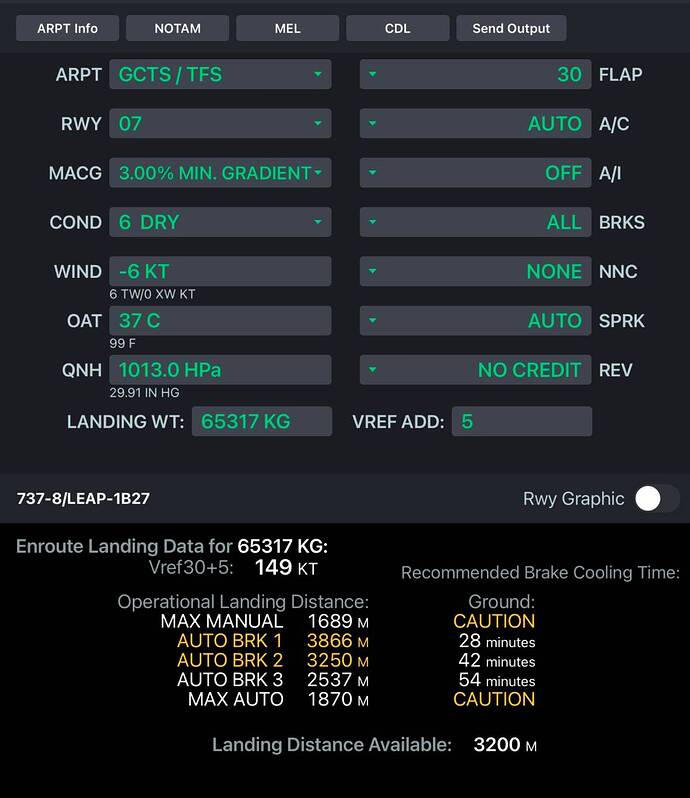Companies that have temperature indication in the airplane may have something written about it.
We don’t have that so we use the brake cooling schedule tables available in the QRH. At least we used those tables until the brake cooling schedule function became activated in our EFB. So now we get a brake cooling time required in minutes in our EFB when we calculate enroute landing performance.
Depending on those figures and factors like temperature, weight, wind, flap setting, autobrake setting, reversers, etc we’ll choose our landing configuration.
Looks like this.
When distance is in amber it means that the LDR is greater than the LDA.
The word CAUTION means that at that configuration the fuse plugs may melt and the wheels could deflate.
Landing with a CAUTION requires an engineer inspection before the airplane can be dispatched again. During the required brake cooling time the parking brake needs to be released. We normally do that as soon as the airplane is on chocks during the turnaround and put it back on when the ground staff start removing stairs and GPU and prepare the airplane for pushback.
In this example you can see that the only possible brake setting to stop on the runway would be AUTOBRAKE 3 and that would require 54 minutes of brake cooling, which may exceed the planned turnaround. So there are 2 options to improve those figures.
First we can calculate again using F40. If the wind isn’t gusting that’s recommended and could decrease VREF enough to improve braking performance by reducing braking energy required. It would decrease both brake cooling required and landing distance required. The other option would be to use reversers. It’s a dry runway so reversers will not reduce braking distance but they will decrease brake heating and the cooling time required.
